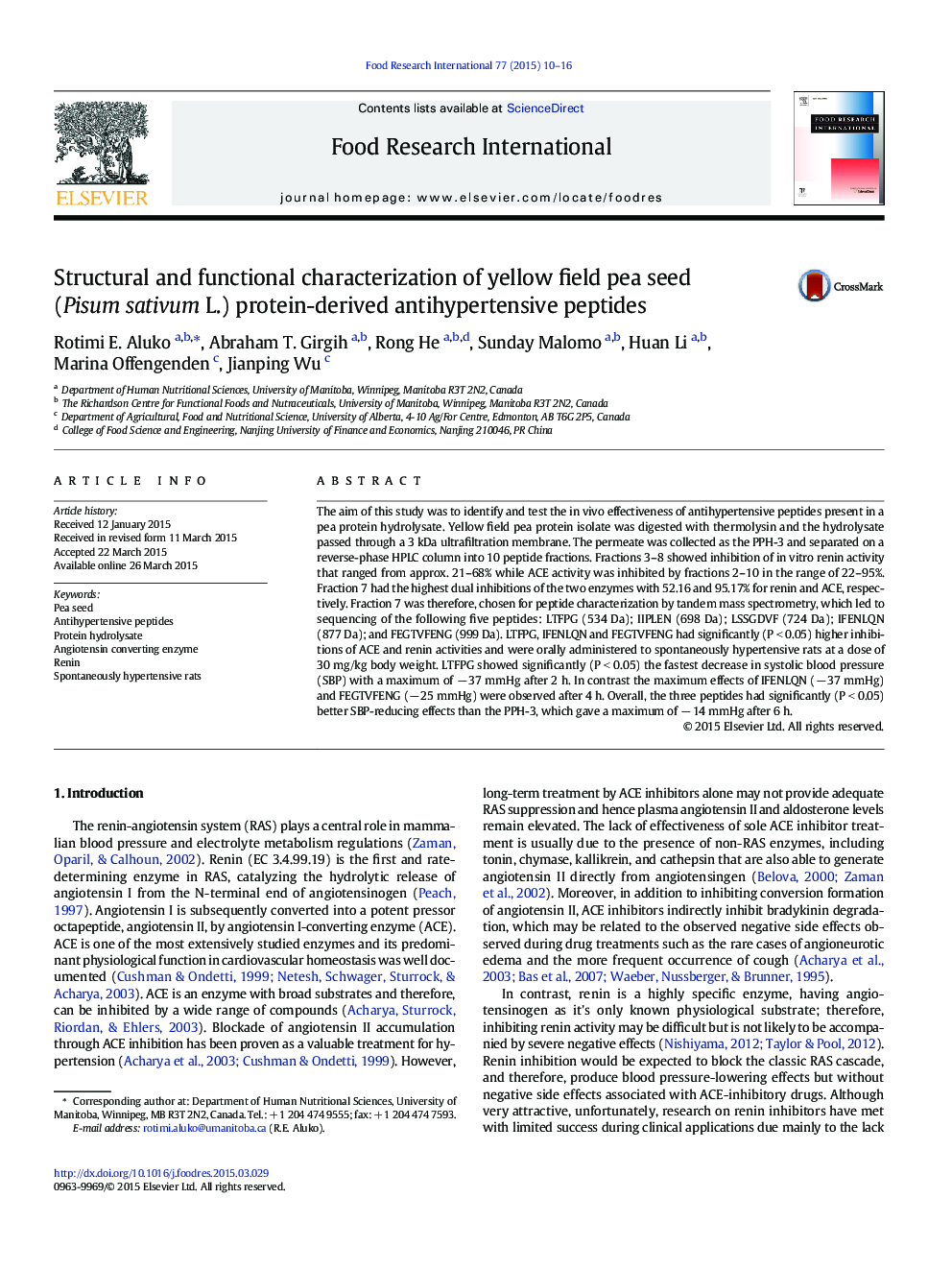| Article ID | Journal | Published Year | Pages | File Type |
|---|---|---|---|---|
| 4561494 | Food Research International | 2015 | 7 Pages |
•Five peptides were identified to be present in a pea protein hydrolysate.•LTFPG and FEGTVFENG showed moderate renin inhibition.•IIPLEN, LSSGDVF, and IFENLQN had nil to poor renin inhibition.•IFENLQN and FEGTVFENG had strong ACE inhibition.•LTFPG and FEGTVFENG had the highest blood pressure reducing effects.
The aim of this study was to identify and test the in vivo effectiveness of antihypertensive peptides present in a pea protein hydrolysate. Yellow field pea protein isolate was digested with thermolysin and the hydrolysate passed through a 3 kDa ultrafiltration membrane. The permeate was collected as the PPH-3 and separated on a reverse-phase HPLC column into 10 peptide fractions. Fractions 3–8 showed inhibition of in vitro renin activity that ranged from approx. 21–68% while ACE activity was inhibited by fractions 2–10 in the range of 22–95%. Fraction 7 had the highest dual inhibitions of the two enzymes with 52.16 and 95.17% for renin and ACE, respectively. Fraction 7 was therefore, chosen for peptide characterization by tandem mass spectrometry, which led to sequencing of the following five peptides: LTFPG (534 Da); IIPLEN (698 Da); LSSGDVF (724 Da); IFENLQN (877 Da); and FEGTVFENG (999 Da). LTFPG, IFENLQN and FEGTVFENG had significantly (P < 0.05) higher inhibitions of ACE and renin activities and were orally administered to spontaneously hypertensive rats at a dose of 30 mg/kg body weight. LTFPG showed significantly (P < 0.05) the fastest decrease in systolic blood pressure (SBP) with a maximum of − 37 mmHg after 2 h. In contrast the maximum effects of IFENLQN (− 37 mmHg) and FEGTVFENG (− 25 mmHg) were observed after 4 h. Overall, the three peptides had significantly (P < 0.05) better SBP-reducing effects than the PPH-3, which gave a maximum of − 14 mmHg after 6 h.
